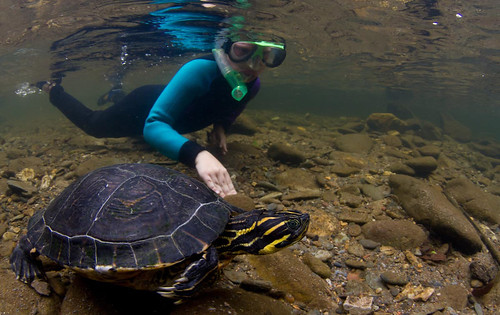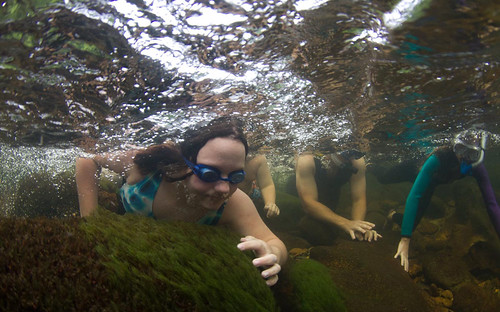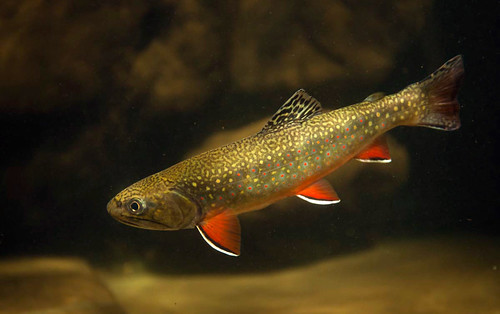
Deep into the Cherokee National Forest on the headwaters of the Conasauga River, an innovative river conservation program brings thousands of citizen snorkelers to the vibrant waters of Southern Appalachia. Now armchair travelers can enjoy this experience via a six-minute online film.
“A Deeper Creek – The Watchable Waters of Southern Appalachia,” produced by Freshwaters Illustrated in partnership with the Forest Service, takes the viewer to a pool in the river’s headwaters in southern Tennessee and northwest Georgia. The flowing waters teem with 70 species of fish and a dozen species of freshwater mussels and enjoys a “virtual” snorkeling experience.
“Well good morning! Welcome to the Cherokee National Forest. We're going to have a great day today,” said fisheries biologist Jim Herrig as the film begins. “The water is going to be good. You're going to see some incredible fish out here. It's going to be a lot of fun.”
Herrig introduces Casper Cox, a guide with the Forest Service and part of all the fun.
“He is an expert on all the fish identification and expert snorkeler,” Herrig told the busload of students. “He will help you with identifying all the fish and tadpoles and everything else that you're going to be seeing in the water.”
Herrig pioneered the snorkeling program as a way to entice local students to don wet suits and put on snorkels and immerse themselves in the clean, clear waters protected by the Cherokee National Forest. Here, in these cool running waters, local and visiting youth witness the incredible and colorful aquatic biodiversity that thrives beneath the water’s surface. Iridescent fish, turtles, salamanders and freshwater mussels amaze the students.

“On a hot summer day, you put your head in that water and you're surrounded by life,” said Cox. “All kind of creatures big and small, colorful are darting about. It's amazing. You're in the water with an incredible amount of life.”
Herrig explained how students experience bountiful aquatic life up close and personal when they visit the river. He and other Forest Service staff and volunteers also teach the underlying story of how strong and vibrant forested watersheds provide clean water and aquatic biodiversity.
“I think when people see the great diversity of fish in here they also recognize that the reason they are here is because of clean water,” Herrig said. “We try to maintain the cleanest water we can in the streams coming off the national forest. Part of the reason the Forest Service was founded was to provide clean water. By keeping these streams running clean, we're able to maintain the diversity.
While the Conasauga may be a unique river home to species of freshwater fish found nowhere else on the planet, the experience of freshwater snorkeling can be safely enjoyed wherever clean, clear water remains. The Forest Service recently unveiled a snorkeling toolkit designed to guide Forest Service scientists, partners and watershed groups who want to start their own youth snorkeling program. The forest’s program is rapidly growing in popularity: more than 900 people ventured beneath the water surface with a snorkel mask this year.

